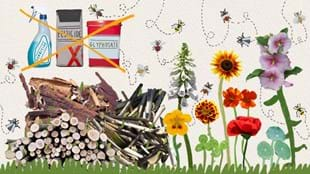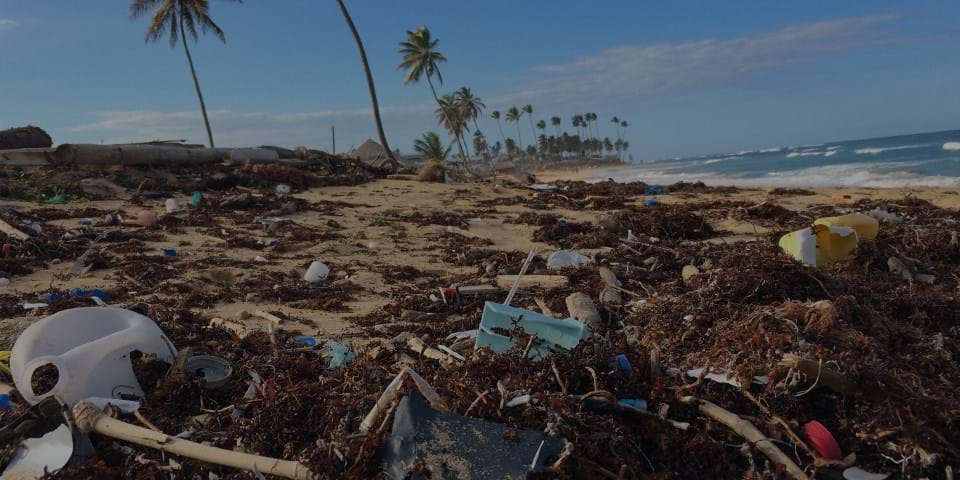Entomologists call it “the windshield phenomenon” – the modern realization that, at the end of a long car drive, your windshield and headlights are nowhere near as covered with dead insects as they would have been a couple of decades ago. Where have they gone? Have they evolved to successfully avoid cars, or are there fewer insects now?
Scientists suspect the second reason is correct. Research now shows insect populations have indeed nosedived over the past 30 years. Some have called it an “insect Armageddon”.
While many of us are aware of the plight of the bumble bee – which along with honey bee has suffered intensive loss since the 1940s – the same is true of less charismatic insects. In Germany, the Entomological Society of Krefeld has collected three decades of high-quality data on flying insects. In 2017 it revealed their total biomass has plummeted by more than 75 percent since the study’s inception. Another study showed similar trends in a Puerto Rican forest, which saw a 98 percent fall in ground insects in 35 years.
Why does it matter? Because the world as we know it can’t continue without insects, the basis of our food chain. Not only do they provide a meal for those higher up, such as birds, fish, and reptiles, but they are the caretakers of the environment, cleaning up waste, helping plants pollinate, providing pest control, and much, much more. If insect populations continue their catastrophic downward slide, there could be none left in 100 years.
What’s causing it? One of the big contributors is thought to be intensive agriculture and the broad application of modern pesticides and herbicides. When used on crops and anywhere weeds and pests are a problem – roadsides, parks, schools, homes, and businesses – these can have a blanket destructive effect on insects, their food sources, and soil microbes.
Although herbicides are ostensibly designed to be toxic only to plants, there are hints they may affect insects too; scientists in the US recently found evidence that glyphosate, the active ingredient in the world’s most popular herbicide Roundup and many other brands, may be contributing to the decline of honey bees by affecting their gut bacteria.
Glyphosate has come under increasing scrutiny recently. If it’s affecting bees’ digestive tracts, what is it doing to our own food and bodies? Since Roundup came on the market in the early 1970s, it has become so widely used that it can now be found in our food, water, and the urine of those frequently exposed to it, such as agricultural workers. More than six billion kilograms of it have been applied worldwide in the past decade.
Concerns were sparked in 2015, when World Health Organisation’s International Agency for Research on Cancer classified it as “probably carcinogenic to humans”. A 2016 paper in Environmental Health recommended a “thorough and modern” reassessment of glyphosate-based herbicides’ toxicity, for reasons including its contamination of drinking water sources, precipitation, and air; its classification as a carcinogen; its wide presence in the global soybean supply; and because regulatory estimates of tolerable daily intakes in the United States and European Union were based on outdated science.
Cases are mounting against Roundup’s manufacturer Monsanto, a subsidiary of German chemical giant Bayer AG. In 2018 a US jury found that Monsanto had caused the terminal cancer of 46-year-old Dewayne Johnson, a San Francisco school groundskeeper and father of three. He was told Roundup was “safe enough to drink”, and there were no warnings on the packaging. But then he started getting skin lesions. It wasn’t until his non-Hodgkin’s lymphoma was advanced that he learned there were several studies linking glyphosate to cancer.
Johnson was the first to take the company to trial, claiming Monsanto had deceived the public over the cancer danger of its weed killer for decades. The jury awarded him US$289 million, although this was later reduced to $78 million, and also found Monsanto “acted with malice or oppression” in failing to warn of the health effects of the carcinogen.
Monsanto has appealed the verdict but there are nearly 9000 similar cases against the company now before the courts. The first of its kind in Europe was brought by 54-year-old French farmer Paul François, who spent 200 days in hospital after accidently inhaling fumes from Monsanto weed killer Lasso that had seeped out from a container left in the sun. A year later, the president of the Toxicology and Chemistry Association in Paris, André Picot, identified the common solvent chlorobenzene, a major ingredient of Lasso, as the likely cause of François’ illness. Lasso has since been banned in France, but François still suffers from amnesia, vertigo, stuttering, seizures, irritability and recurrent comas.
Consumer sentiment seems to be turning; mass protests erupted in Europe in late 2018 after the European Commission granted a five-year extension of the license to use glyphosate in agriculture. Today, more than a dozen countries have made moves to restrict or ban glyphosate, including Germany, Belgium, the Netherlands, Sri Lanka, and France.
The problem for a long time has been proof: lack of evidence that a product is unsafe is not the same as it being safe. This is particularly so when users are exposed to the product in conditions that don’t mimic strict laboratory conditions.
But extricating pesticides and herbicides from our global industrial food supply is not easy. More crops can be produced for cheaper if countries use these products. So if you’re concerned about pesticides and herbicides in your food and environment, what can you do?
HOW YOU CAN HELP EASE THE ISSUE
Voting with your wallet is always the first and most obvious choice. Stop using pesticides and herbicides in your home or business, and encourage those in your community to do so too, including schools, local authorities, and businesses. You can refuse to buy food that was grown using such substances, which can be difficult because they are used on such a wide variety of crops, such as wheat, barley, oats and peas. Eating a lot more in-season and organic vegetables is one answer, however. You can contact the companies and stores to let them know why you’re withdrawing your custom, support organic companies instead, and grow your own vegetables.
But we still need to bring back insects, and make our environment more hospitable to them. To encourage insects and other invertebrates in your garden, you need both food for them and places to live. You can turn your own backyard into an insect haven by rejecting the cult of the green lawn – a water-and fertilizer-intensive monoculture – and making things a little messy, planting insect-friendly species and creating habitats such as plentiful bark, woodpiles, bundles of twigs, and cracks and crevices in paving.
Look for plants and habitats that suit your local area and native insect populations. You can encourage your local government bodies to do the same with public green spaces. And you can contact your local government representative to let them know that the potential harm of pesticides and herbicides, the loss of insects, and the health of other members of your community matters to you.

Naomi Arnold is a New Zealand-based author and writer specializing in environmental and health issues.








